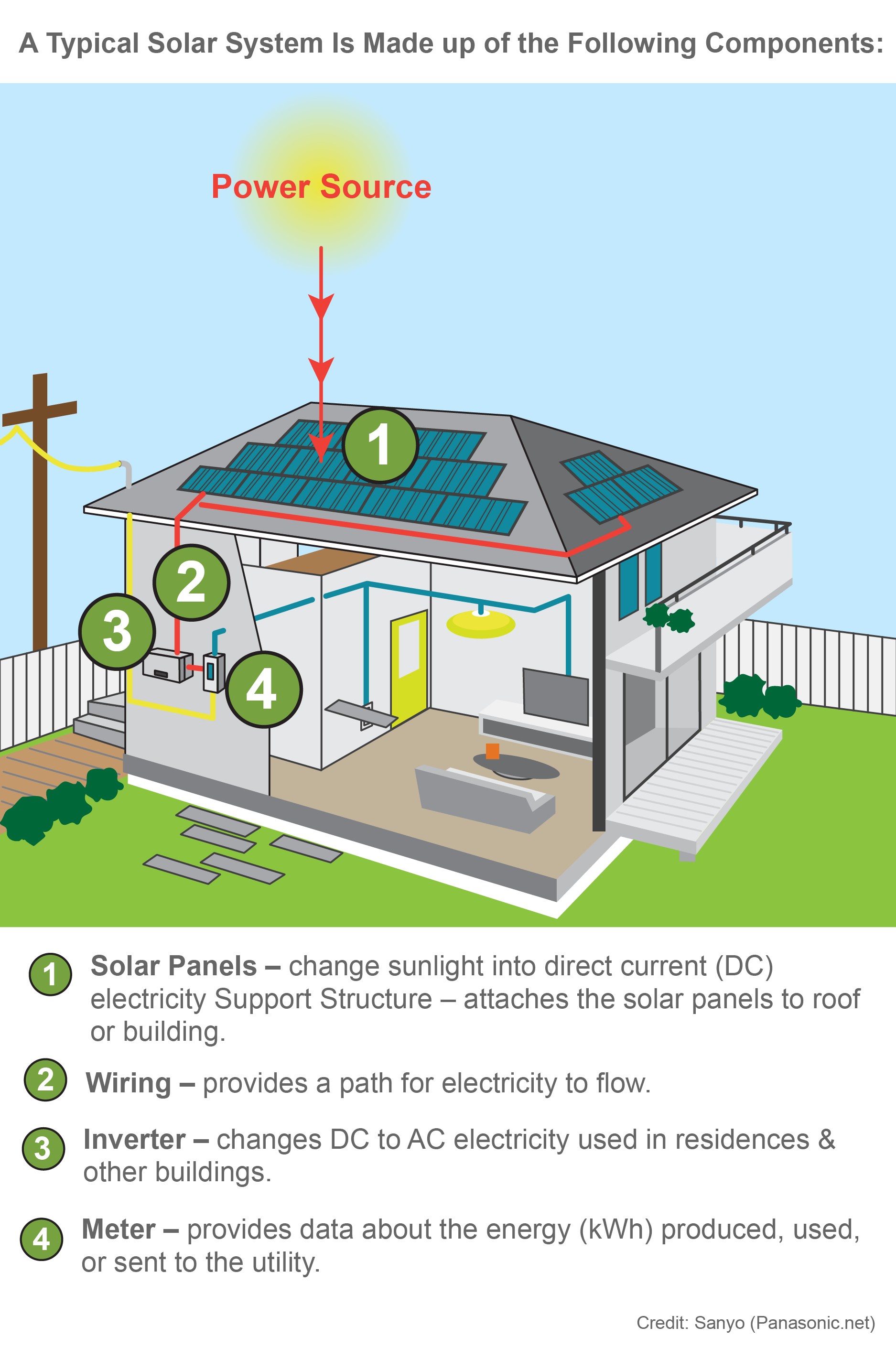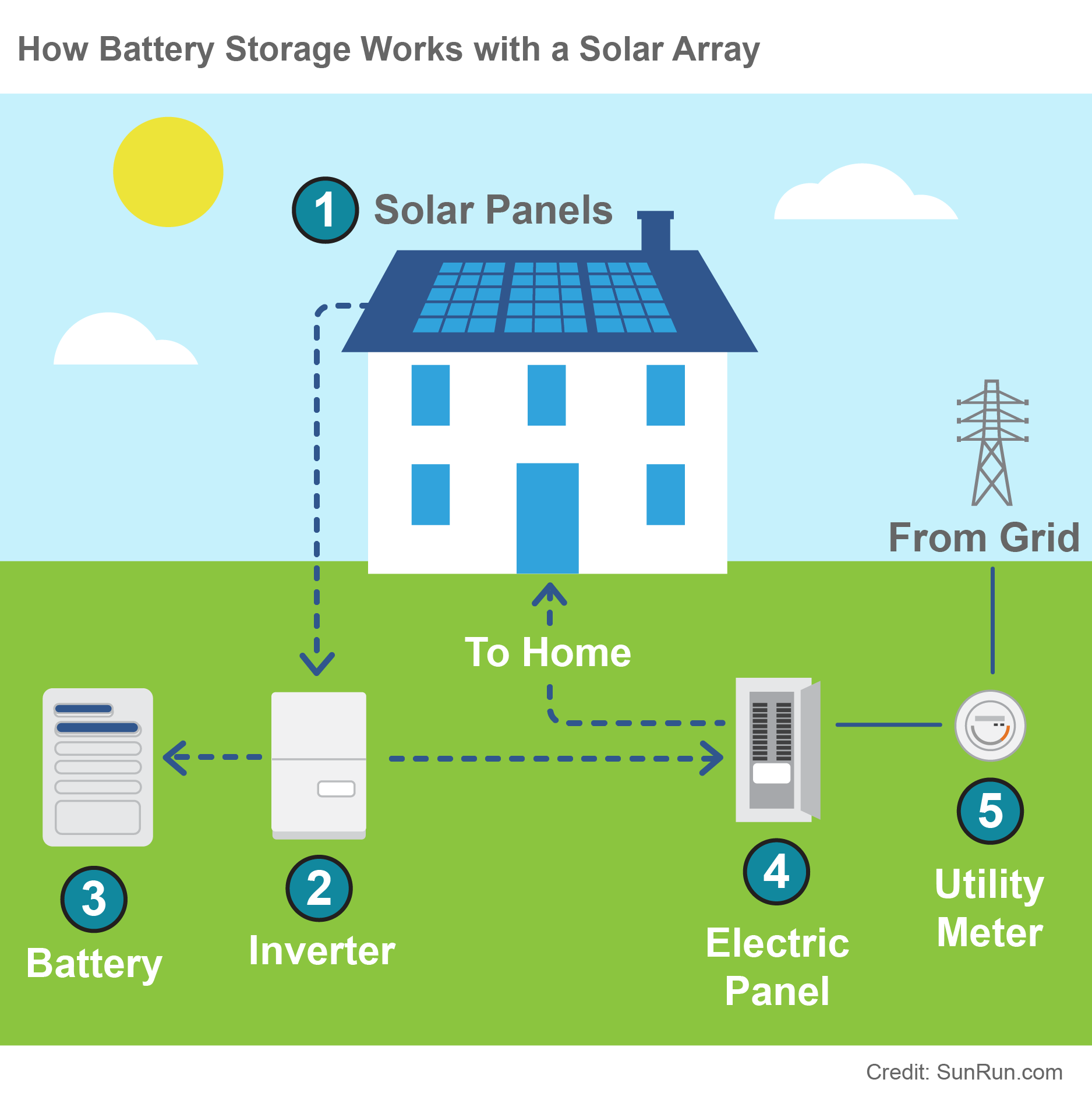
Solar 101
Sunlight is power that fuels life on the Earth. Solar technology has been converting sunlight into energy since the 1950s, but improvements in its efficiency, greater flexibility in its application and lower costs have brought solar technology into more widespread use over the past decade.
Read more below, or for more specific information, view our sub-pages :
How PV Cells Work
- Thin layers of silicon are specially treated with other substances – typically phosphorus and boron - so they assume positive and negative charges.
- Layers are sandwiched together and connected in parallel circuits.
- When exposed to light, the two layers produce an electric charge that is conducted into metal plates on the sides of each cell.
- That current works like the power from any other source.

How a Solar Installation Works
- Solar panels are mounted on special racks that tilt them in the right direction for proper sun.
- Ideal location is on the roof of a building where the power will be used.
- Can be mounted on the ground in surrounding property.
- Location depends on a number of factors, including the type, exposure and roof slope as well as tree cover or shadow-casting structures nearby and landscape.
- Electricity passes through the building’s electrical meter before being used on-site or returned to the electrical grid to which the building is connected.

Energy Storage
- Advances in battery technology are making energy storage more compact and affordable.
- Storage technology makes solar energy more useful by allowing excess production to be stored for use when the sun isn’t shining.

|